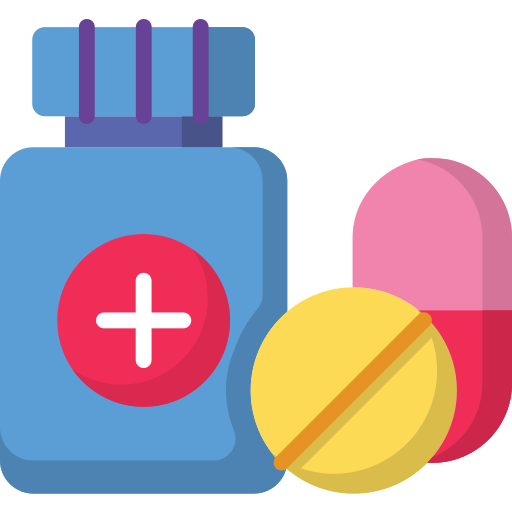High-Risk Substance Use Among Youth

Why is CDC addressing youth high-risk substance use?
Although most youth are in good health, some youth are at an increased risk for behaviors that can lead to poor health outcomes, such as high-risk substance use. The majority of adults who meet the criteria for having a substance use disorder started using substances during their teen and young adult years.5
Youth with substance use disorders also experience higher rates of physical and mental illnesses, diminished overall health and well-being, and potential progression to addiction.
What is high-risk substance use?
For the purposes of addressing HIV and STD prevention, high-risk substance use is any use by adolescents of substances with a high risk of adverse outcomes (i.e., injury, criminal justice involvement, school dropout, loss of life).
This includes:
- misuse of prescription drugs,
- use of illicit drugs (i.e., cocaine, heroin, methamphetamines, inhalants, hallucinogens, or ecstasy), and
- use of injection drugs which have a high risk of infection of blood-borne diseases such as HIV and hepatitis.

The Facts
- 15% of high school students reported having ever used select illicit or injection drugs (i.e. cocaine, inhalants, heroin, methamphetamines, hallucinogens, or ecstasy)1,2
- 14% of students reported misusing prescription opioids.1,2
- Injection drug use places youth at direct risk for HIV, and drug use broadly places youth at risk of overdose.2
- Youth opioid use is directly linked to sexual risk behaviors.2
- Students who report ever using prescription drugs without a doctor’s prescription are more likely than other students to have been the victim of physical or sexual dating violence.4
- Drug use is associated with sexual risk behavior, experience of violence, and mental health and suicide risks.2
Risk Factors for High-Risk Substance Use
Risk factors for youth high-risk substance use can include:
- Family history of substance use
- Favorable parental attitudes towards the behavior
- Poor parental monitoring
- Parental substance use
- Family rejection of sexual orientation or gender identity
- Association with delinquent or substance using peers
- Lack of school connectedness
- Low academic achievement
- Childhood sexual abuse
- Mental health issues
High-Risk Substance Use Prevention
Research has improved our understanding of factors that help buffer youth from a variety of risky behaviors, including substance use.
These are known as protective factors. Some protective factors for high risk substance use include:
- Parent or family engagement
- Family support
- Parental disapproval of substance use
- Parental monitoring
- School connectedness
What is CDC Doing?
- Using surveillance data to explore risk and protective factors for youth substance use.
- Conducting research on the topic of youth substance use and its association with a variety of risks and behaviors.
- Conducting an analysis of local and state policies on youth substance use prevention.
- Conducting a pilot project in high-risk rural communities called Teens Linked to Care (TLC).
Resources
- Drug Basics
- Making the Connection: Drug Use and Academic Grades [PDF – 452 KB]
- Monitoring Your Teen’s Activities: What Parents and Families Should Know
- NIDA for Teens
- Parent Engagement: Overview Brochure
- Substance Use and Sexual Risk Behaviors Among Youth
- Teen Health Services and One-On –One Time with a Healthcare Provider: An Infobrief for Parents
- Teens Linked to Care
- Youth Risk Behavior Surveillance System (YRBSS)
- Youth Risk Behavior Survey Data Summary and Trends Report 2009-2019 [PDF – 31 MB]
- CDC. Youth Risk Behavior Surveillance—United States, 2019. MMWR Suppl 2020;69(1):1-83.
- CDC, Division of Adolescent and School Health, National Center for HIV/AIDS, Viral Hepatitis, STD, and TB Prevention. Youth Risk Behavior Survey Data Summary & Trends Report, 2009–2019 [PDF – 31 MB]. Atlanta, GA: U.S. Department of Health and Human Services, Centers for Disease Control and Prevention, Office of Infectious Diseases, NCHHSTP; 2020.
- Clayton, H.B, Lowry, R., August, E., & Jones, S.E. Nonmedical use of prescription drugs and sexual risk behaviors. Pediatrics.2016; 137 (1),e20152480
- Clayton, H.B, Lowry, R, Basile, K.C., et al. Physical and Sexual Dating Violence and Nonmedical Use of Prescription Drugs. Pediatrics.2017; 140 (6): e20172289
- U.S. Department of Health and Human Services (HHS), Office of the Surgeon General, Facing Addiction in America: The Surgeon General’s Report on Alcohol, Drugs, and Health. Washington, DC: HHS, November 2016.